Eduard Vallès
This article has been published in Catalan and Spanish, with some variations, in the magazine Mirador de las Arts, 3 August 2020.
This is not an article about Josep Pla, nor perhaps about Nonell, it is rather about the Nonell of Pla that, for different reasons, ends up being something else.
It deals, in broad strokes, with the idea – his expression – that Pla was built on Nonell and how, in a way, it could have been recognised or projected on time.
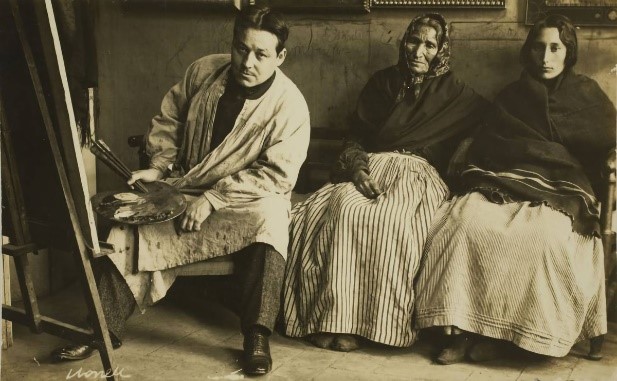
Pla wrote one of his famous Homenots (notable figures) about the artist Isidre Nonell Monturiol (Barcelona 1872-1911), which was published in volume XI of his complete work (Edicions Destino, 1969). This is how his text begins: “I would be sorry to die without leaving a vague and hesitant news about the idea I have of Isidre Nonell. Everything I know is second hand ”. Pla is one of the great writers in the history of Catalan literature, one of the most written about art, and his books and similarities about specific artists stand out. His books are well known about Santiago Rusiñol and Manolo Hugué, but he also wrote about other names, such as Joaquim Sunyer, Joaquim Mir or Antoni Gaudí, for example.
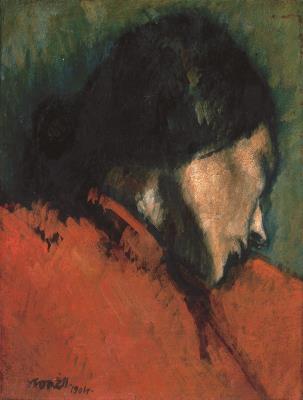
Probably the most relevant are Pla’s books on Rusiñol and Manolo, which have already become two classics. Santiago Rusiñol and his time (the first edition was in Spanish, by Editorial Barna, 1942) was published eleven years after the artist’s death and became one of his first monographs. Although there is admiration and a certain identification with the artist, Pla’s interest in Rusiñol was partially instrumental, given the fact that with him he regained the spirit of an era that no other personality, due to his complexity and magnitude, could represent as Rusiñol did. The case of Manolo is different, despite being a great artist, he did not have the power or the registers of Rusiñol, who was at the same time a painter, writer, playwright, journalist and art collector, all these registers with a high degree of excellence. In addition, Pla published Manolo’s Life told by himself (the first edition, printed by Joan Sallent, dating from 1928) a few years before the artist’s death and, by the way, the beginning of the book is one of the most hilarious than I remember reading.
Nonell in the Homenot of Pla
Pla used three different registers in his text about Nonell: A first one, where he starts from reference texts about this artist. Unlike when he writes about other artists, when Pla did so about Nonell there were already relevant monographic texts, for example the book by Rafael Benet Isidro Nonell and his time (Iberia, 1947). In his text Pla also cited the first monographic volume – but collective – dedicated to Nonell, with several articles published in 1917 by La Revista Publications. It consisted of a prologue by Eugeni d’Ors and texts by authors such as Francesc Pujols or Joan Sacs (heteronym of the painter Feliu Elias when he wrote about art), among others. It also includes a first biography and cataloguing of Nonell’s work, both carried out by Alexandre Plana. Plana owned one of Nonell’s finest paintings, an extraordinary foreshortening of Consuelo from the year 1904, Nonell’s favourite gypsy model, who would die the following year after she fell on the shack where she lived, in the area where Barcelona’s Model Prison is currently located. This fantastic oil painting, a prodigious combination of reds, greens and blacks, is currently part of the collections of the Museu de l’Empordà of Figueres, thanks to the donation of Plana’s mother, Mrs Concepció Santaló. In his Homenot Pla he also quotes texts by Joan Sacs or Plàcid Vidal, who dedicated some fragments of his tasty The singular anecdotes. Therefore, it is clear that Pla has documented himself well, and correctly, about Nonell.
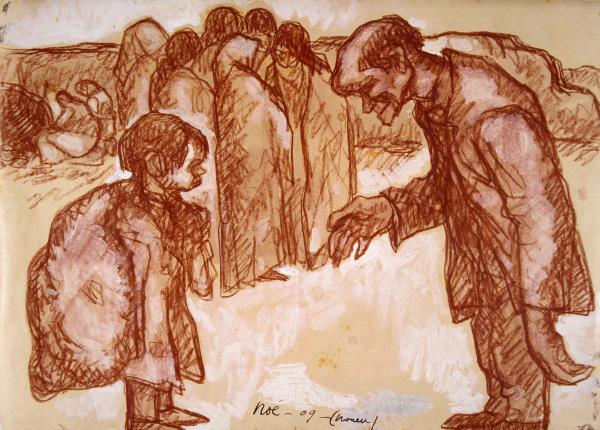
A second register of his text comes from oral memory. As they were still alive and he was able to treat them, Pla provided the testimonies of some of the personalities who had known Nonell personally, such as the artists Xavier Nogués and Ricard Canals, among others: “If I didn’t reach his intimacy, I’ve said before that I’ve met two people –Xavier Nogués and Ricard Canals– that treated Nonell very well, and who were his companions and told me about him as it corresponds to two intelligent, cultured and very knowledgeable people ”.
And finally we find a third register, the freest one, where Pla unfolds his idea of Nonell’s work, but also of his life. This is where his most original reflections appear, but also the most subjective ones.
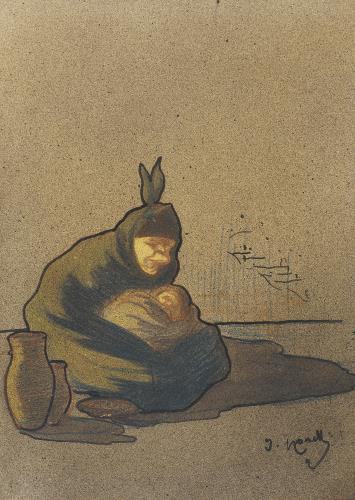
It is worth noting that Pla does not follow the method of the historian, he has no special interest in the accuracy of the dates or in establishing a certain order. For example, he exaggerates some anecdotes from the artist’s biography, but in any case, this is relative because everything is conditioned by Nonell’s idea. For example, he says that Ricard Canals accompanied Picasso to meet the cretins in Boí, a trip that never existed; or it locates that mythical stay of Nonell in the year 1894, when in fact it was 1896. It was there where he knew the community of cretins and goiters that, shortly after, would appear in his work and would have a certain impact in the artistic Barcelona . In his text, Pla endorses the theory of Rafael Benet, who considers Nonell’s Cretins of Boí as a foundational moment in the modernity of Catalan art.
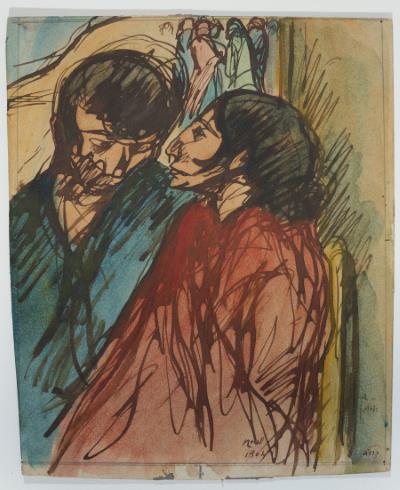
Pla also writes about the legendary failures of Nonell, during the years 1902 and 1903, on the occasion of several consecutive exhibitions at the Sala Parés, where he presented his paintings of gypsies, poor and lonely, some of them presented as large monolithic blocks. Despite the criticism received, all his gypsies were different and all posed a challenge, whether trying out new perspectives, shapes or chromatisms. The very seriality of these gypsies characterised him as modern, even more so when he stubbornly insisted on a bet that had gone badly enough for him to not make a living, an aspect that plunged him morally and that Pla describes very well in his text. Pla made a resounding diagnosis of Nonell’s insertion into his artistic time: “Everything Nonell said was about being an artist, a man of reflection, observation and touch – of possession, after all is said and done. As such, he had the whole period against him”. Shortly afterwards, he concludes with an astrally nasty way: “You have to think – something that is always forgotten – that Nonell was a contemporary of Masriera, Brull, Tamburini, Riquer. Are you able to take care of the severity of the disease? ” In his socio-artistic context, those gypsies had an obvious countercultural character. Not for the subject itself, because, after all, many contemporary artists painted poor gypsies, but they did so from a folkloric, anecdotal, somewhat harmless point of view.
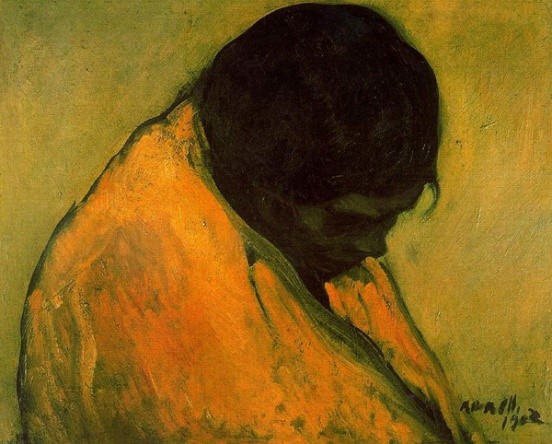
Nonell, on the other hand, made no concessions, rather than painting gypsies, he crudely conveyed the idea of loneliness, poverty, alienation, and did so through expressionist pictorial calligraphy. Núria Pedragosa, curator-restorer of the Museu Nacional, well acquainted with the supports and pictorial materials used by Nonell, explained to me how in some paintings Nonell managed to apply the dry lumps from the previous days on the canvas. He mixed them with the new paint, so that they turned out to be absolutely unique textures. This effect increased the dirtiness of the work, so we can imagine the impact it must have caused on the audience of his time.
An admiration without nuances
The central idea of the text is, from the beginning, an unconditional admiration for the artist: “If Nonell had been born French or had only adapted to Paris, he would have been subjected to the agitation and force of French propaganda [ …] He would have been an international value ”. Pla also spoke of Nonell in the famous interview in the programme A fondo –yes, the one during which Pla rolled a cigarette and sealed it with saliva while he spent time thinking about the answers — which the journalist Joaquín Soler Serrano asked him. In the middle of the interview (46’35 ”), the journalist asked him about various artists and, when he mentioned Mir’s name, he said that he liked him but then changed his tone, raised his index finger with a solemn gesture, and he barked: “But the great painter here is Nonell, Nonell is very good and Mir too, they do painting with an important weight …”.
Pla’s admiration for Nonell’s work was such that he wrote in 1961, in the process of creating the Museu Picasso in Barcelona, that the future museum should have, no more and no less, a space dedicated to the work of Nonell. This statement was made, at least, in an article in El Correo Catalán (“Nonell y Picasso”, 11/29/1961). Three days earlier he had published another, entirely devoted to Picasso, where he was already announcing this second article (“Sobre Picasso“, 11/26/1961). Pla justified Nonell’s presence in the rooms of the Museu Picasso due to his role as a first-rate reference in Picasso’s training: “At this time I would address, if I could, [mayor] Mr. Porcioles with the demand to dedicate a part of the museum being planned to Isidro Nonell. Why not? I don’t think he played a bad role, on the contrary […] If in those years Picasso took advantage of Nonell so much, it would not be logical that now, when he is trying to raise a monument to Picasso, Nonell, who was so humiliated in life [… ] had in the reference museum the corner that his considerable work deserves. This would make him known and, I am sure, that many visitors – those who know what he was about – would be dazzled.”.
Pla places Nonell and Picasso as two antagonists in terms of personality and, to reinforce Nonell’s image, he degrades Picasso by attributing to him a “pedantic loquacity” that was not the case. In any case, there is a certain voluntarism in Pla’s text, almost an act of love – if I may – that leads him to compensate for the banishment suffered by Nonell. In any case, Pla is completely right with the debt contracted by Picasso with the Catalan art of his time, and very especially with Nonell, but this goes beyond a simple article.
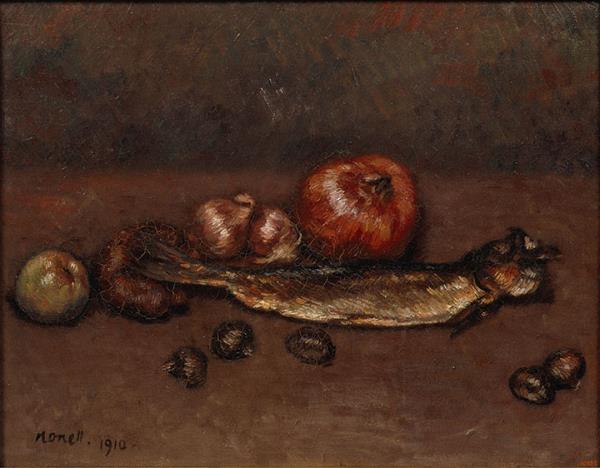
There are two characteristics of Nonell’s work that I have often found detected in Pla — at least in the art texts I have read of him — restraint and sensuality, both in a very specific sense. These are two attributes that, taken to the extreme, can be neutralised between them. Nonell’s restraint is legendary, in character but also in work. “I paint and that’s all,” he exclaimed. Pla writes that “one of the things he disliked most was the aesthetic language, the lexicon of the people who talked about art. His arguments were his paintings; wise words exasperated him.” And soon after, he identifies him: “I understand that: Nonell was a man of the trade, a craftsman. […] Aesthetics is a horrible thing: it was invented by German teachers.” Pla also reminds us of Nonell’s legendary perfectionism, which led him to resume the same work a few days later, and he repainted it, adding new nuances, textures and colours. In terms of sensuality, it is one of the most profound features of Nonell’s work, in his painting, but especially in his work on paper. Nonell, as several critics have repeated, is sensual by sliding charcoal, pencil, or ink onto paper, and wisely applying watercolour stains, with the master hand of an alchemist. And not to mention his fascinating “fried” drawings — a rarity even for late 19th-century French art critics — that confirmed him as a profound connoisseur of pictorial materials.
Pla’s fascination with Nonell’s still lifes
But of all Nonell’s work, Pla is fascinated by last-minute still lifes. They are still lifes of thunderous modesty and misery, with onions, jars of honey or pomegranates, but Pla highlights those that contain herrings. Nonell made these still lifes in a final twist in the last months of his life, when his palette had been lightened and he had achieved his great triumph at the 1910 exhibition at the Faianç Català, unfortunately shortly before he died at only thirty-eight years of age. These still lifes were creations against the backdrop of his previous work, representing for him an almost unpublished genre. Nonell is known for his landscapes – he began as a landscape painter with the Colla del Safrà – and, precisely with landscapes, he appeared in various exhibitions during his beginnings. And of course, the portrait, his genre par excellence, and with which he established himself as an artist. In reality, very few still lifes are known, about a dozen. There are a few in the Museu Nacional, a couple in the Víctor Balaguer Museum in Vilanova i la Geltrú and in various private collections.
The two still lifes of the Víctor Balaguer Museum – like some of the Museu Nacional – were part of the legendary collection of Lluís Plandiura, “characterised by their classic golden frames, some of them with a herring. This combination of a herring with the gold of the Plandiura frame reminds me of a fragment from El Quadern Gris, where Pla compares the herrings with gold: “In Gervasi’s tavern you drank, deals were made and, if it was convenient, we sang between a slice of sea bass and another of chicken. […] The herrings —food of the poor — was eaten with toast with oil and vinegar. The tavern was filled with smoke, the herring shone like a piece of gold on toast, the wine poured from the barrels pink and spirited.
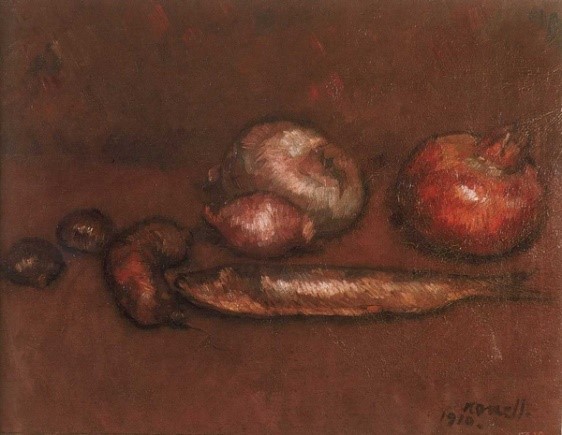
These terminal still lifes are the synthesis of a career focused, broadly, on the margins, on stigma. It could be said that they are the silent but resounding corollary of the previous iconographic galleries of the cretins, with goiters, the crippled, the people repatriated from Cuba and, above all, the gypsies. Pla writes: “Of the period in which still lifes were painted, we must not forget, in the last years of his life, the luminous herrings act as a kind of summary of the whole period. You can’t ask for a more vulgar or more elaborate or more rudely popular topic than these herrings ”. Pla calls them “luminous herrings” when, just looking at them, it’s obvious we’re in front of a literary license. When Pla praises some modest herrings, he actually sees not only a meal of the poor, but an allegory: He knows perfectly well that an artist has painted them with an artistic and vital journey that forces him to interpret these herrings in a very connoted key. Pla ends his text on Nonell with praise and a prediction: “Nonell will become, for the authentic painters of the country, an idol. I have lived through this period. It’s been an upward process, which hasn’t managed to make him a popular personality […] It seems to me that at this point we’re at the beginning. Nonell’s personality will be on the rise”.
In short, without being the best of his texts about an artist, this Homenot dedicated to Nonell is impressive in how he treats the biography of this artist, it seems that he has felt a certain empathy for the retreat from life that Nonell lived in those recent years. But also for the irreducible defense he makes of his talent, even placing him in a privileged space of Picasso’s training and vindicating this condition. But, above all, it seems that Pla is recognised in some of the values of this artist, which he defends with the same conviction as if they were his own. That sense of restraint, which we have often noticed in Pla, is almost always detected in Nonell. In a stroke of his pencil or in a single brushstroke, a whole world is condensed, for its precision and balance, but above all for all those other brushstrokes that he had the wisdom not to make.
Related links
Nonell, between tradition and modernity: affinities and complicities /1
Nonell, between tradition and modernity: affinities and complicities /2
Nonell in context. Beauty from the margins
Art modern i contemporani







